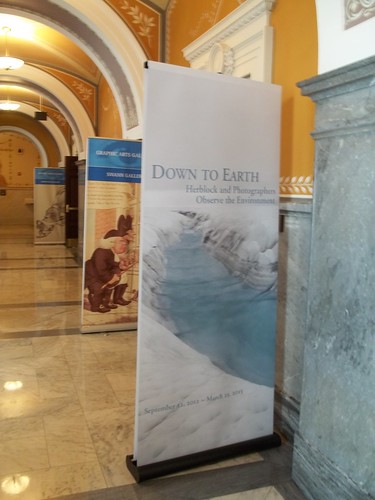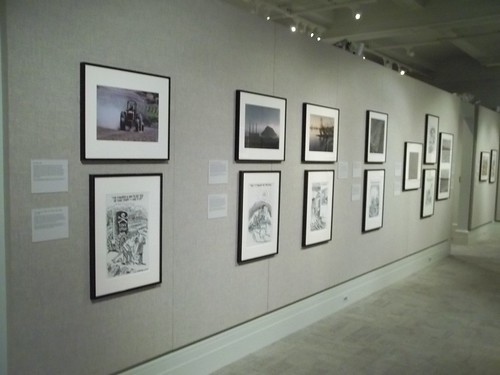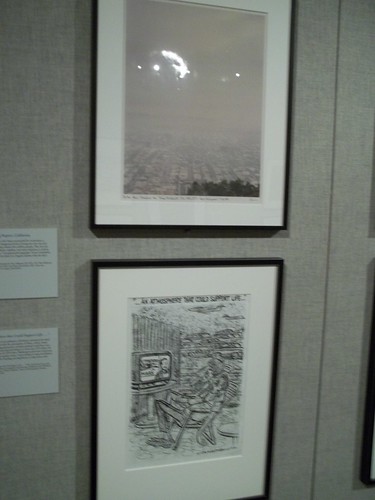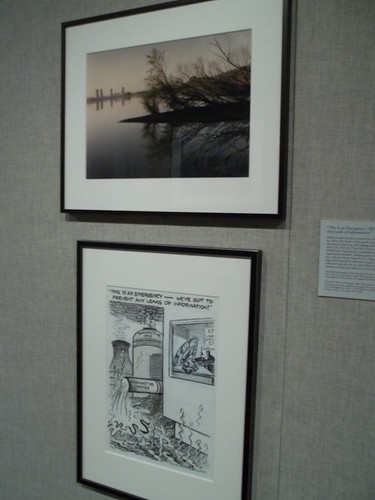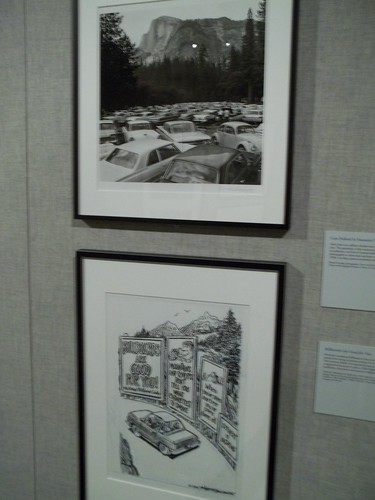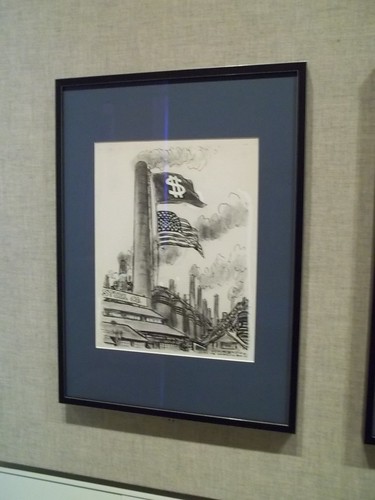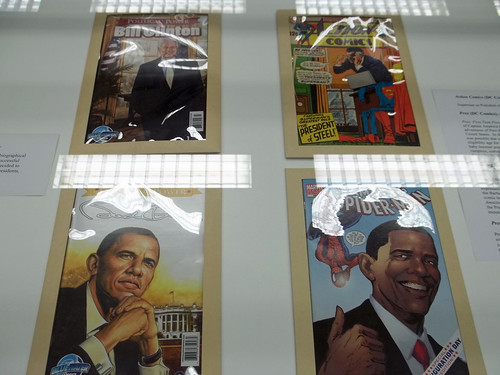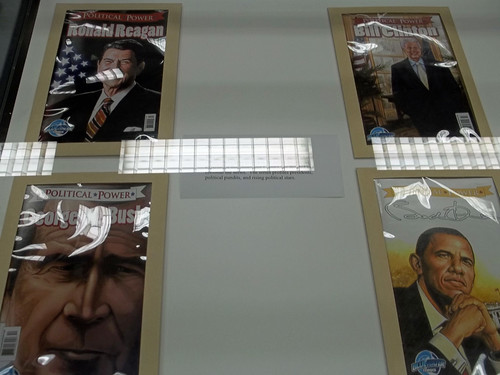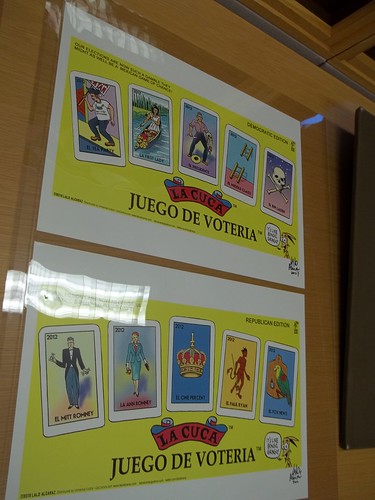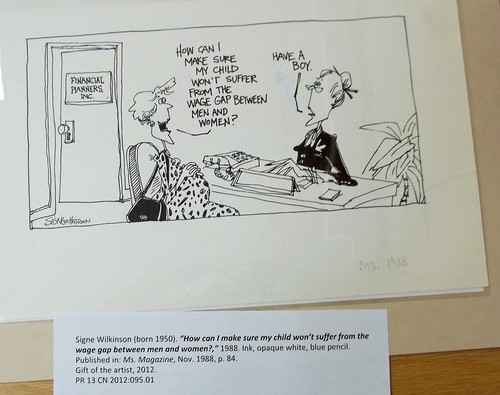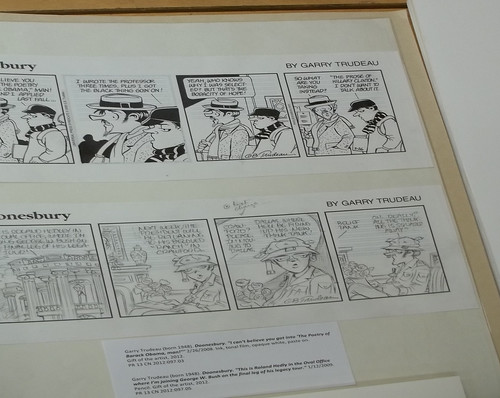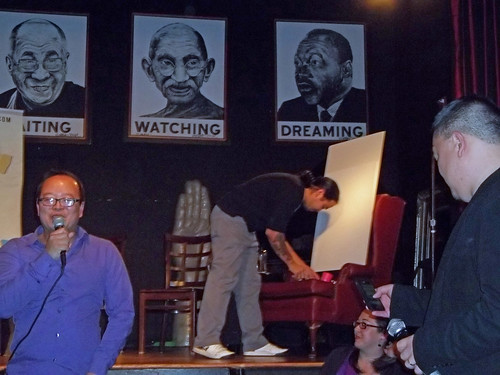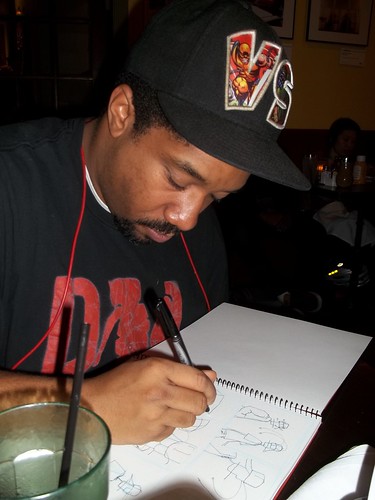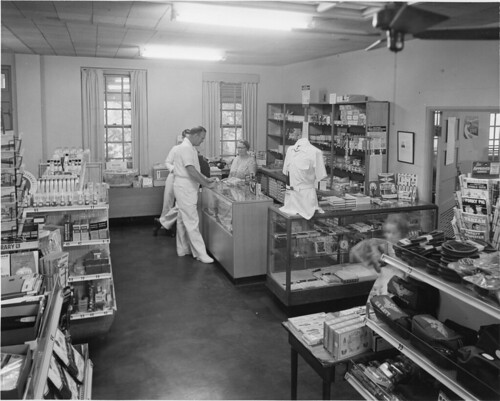Click here for part 1.
Comic Books
The comic book itself was originally a form of merchandising comic strips. Early magazine-style comic books, such as Proctor & Gamble's premium Funnies on Parade in 1933 and Famous Funnies in 1934, reprinted comic strips. Gulf Comics Weekly, a tabloid-sized oil company premium had begun publishing original comics in 1933 and the rest of the industry eventually followed (Beerbohm and Olson, 1999: 229). There are thousands of free promotional comic books. Giveaway comics are usually created to educate about or promote a company or cause. Examples include Marvel and the American Cancer Society's Spider-Man, Storm and Powerman (1996); Disney and Exxon's Mickey and Goofy Explore the Universe of Energy (1985) and Field Enterprises and the Union Fork and Hoe Company's Miss Peach Tells You How to Grow Flowers, Vegetables and Weeds (1969).
Comic book licensing has occurred at least since the creation of the first superhero, Superman. All of the major companies like DC, Marvel, Fawcett, Archie, Malibu and many minor ones like Cartoon Books, the publisher of Bone, have merchandising and licensing. Some companies, like Dell were the merchandising, as they produced comics mostly based on characters and stories licensed from other media. A modern counterpart exists in Dark Horse Comics which publishes an extensive Star Wars line among other licensed properties. Gladstone Publishing, which, like Dell, relied totally on producing comics based on licensing, shut down in 1998. Gladstone's owner, Bruce Hamilton, described the occasional difficulty of using licensed characters, "[Disney] keep[s] coming up with licenses that have tougher and tougher and more unreasonable demands in their boiler-plate language to the point where I have decided I am just not willing to negotiate any new licenses with them" (Spurgeon, 1998: 8). Hamilton's experience with Disney may reflect both the current financial value and also the changing legal definitions of intellectual property, but it is the reader of comics that has lost the pleasure of these classics11. Games such as Dungeons and Dragons and toys like the Micronauts have also become successful comic book series.
Of the major comic book companies, DC Comics has been among the most successful in selling their characters. DC has been licensed so successfully that its characters are household words, rivaled only by Disney and a few other major properties such as Tarzan.

Figure 5 Batman's world-wide popularity during the television show is demonstrated by this US Army Intelligence copy of a bootleg image on a Vietnamese nasal decongestant. Courtesy of the National Museum of Health and Medicine, Washington, D,C. (Vietnam War Collection).
The 1966 Batman television show (Figure 5) demonstrated how successful marketing could be in the increasingly prosperous and consumer-oriented America. About the same time, Marvel Comics began merchandising its characters after the successes of Spider-Man, the Fantastic Four and the Hulk. Steve Ditko, the co-creator of Spider-Man, reportedly left the company when he did not receive a share of the licensing (Beerbohm, 1999). Like most companies, Marvel pursued licensing and had a wide variety of products and tie-ins with its characters including television shows, Slurpee cups, Pez dispensers, toys, and other products. In the 1990s, Marvel, after becoming a publicly-held company traded on the New York Stock Market, began aggressively seeking commercialization of its characters, and expanded its domain by purchasing sticker and trading cards companies. Its core business of comic books also grew because of "speculators" buying multiple copies of comics for long-term investments. When all three of these collectibles became less popular, Marvel was left in poor financial condition ("Comic Book Publisher", 1998). After declaring bankruptcy in 1996 and being taken over by its licensing partner, ToyBiz, in 1998, the reorganized company reported, "This [year's first quarter] increase [in sales over 1998's first quarter] was largely attributable to the inclusion of approximately $15.3 million in sales from the Licensing division and approximately $10.4 million in sales from the Publishing division, which were acquired as part of the Company's acquisition of Marvel Entertainment Group in October, 1998" (Marvel Enterprises, 1999). In other words, the licensing, on a strict accounting level, was more profitable than publishing the comic books, but both parts of the business, which is still based on comic characters, had multi-million dollar sales.
At times, the characters themselves become merchandise. The survival of comic strips far beyond the life of their creator is too well known to discuss here, although a quote from the Ripley's... Believe It or Not! website is instructive: "Almost 50 years after [Ripley's] death, the Ripley's Believe It or Not! cartoon is still wildly popular; printed daily in 147 papers worldwide, in 38 countries and in 10 different languages" (Ripley's, 1999). A similar, although less frequent, occurrence happens with comic books when a successful company purchases the creations of an unsuccessful rival. DC Comics has been especially active in purchasing characters, including Blackhawk from Quality and Captain Marvel from Fawcett, both of which were "seamlessly" integrated into what is currently known as the DC Universe. For a short time in the 1990s, DC licensed and published Archie Comics' superheroes from the 1960s under their Impact! imprint. This trend towards the commodification of characters in comic books can also work in favor of some creators who, since the 1980s, have been able to own their characters12. Many characters have now been published by multiple companies who essentially licensed the character from the creator. Teenage Mutant Ninja Turtles, perhaps the ultimate self-published merchandising success story13, has recently been published by Archie and Image companies.
Even unlikely sources lead to licensing empires. EC's 1950's horror comics were licensed extensively 45 years after their creation due to the success of the television series, Tales from the Crypt in 1989. These are the same comics that were originally considered so gruesome that they were indicted in the anti-comics movement (Diehl, 1996). EC's Mad Magazine, putatively an anti-establishment, anti-commercialization comic, at least based on its editorial stance, resisted the trend for years, but eventually succumbed. As William Gaines said, "A lot of people have one way of looking at [merchandising Mad]: like 'Peanuts' is merchandised to its eyeballs...I don't object to that, except that a magazine like Mad, which makes fun of people who do that -- it doesn't seem proper for us to do it ourselves" (Reidelbach, 1991: 174). Mad's long-term drop in circulation eventually led them to licensing. With Gaines' death and Mad's complete incorporation into the Time-Warner conglomerate, the process has accelerated with Alfred E. Neuman and Spy vs. Spy action figures now available in comic book stores.

Figure 6 Kitchen Sink's candy bar illustrated by Crumb's Devil Girl proved surprisingly popular and was followed by more underground candy.
Possibly the most unlikely source, underground comix creator Robert Crumb has been heavily merchandised in recent years (Richter, 1995). Crumb, as a counter-culture icon, had seen his "Keep on Truckin" image appropriated without any compensation nearly three decades ago. In the 1990s, and especially with the release of the movie Crumb, Kitchen Sink Press extensively used his oeuvre in ways not entirely expected, such as the Devil Girl candybar (Figure 6). Kitchen Sink, on the other hand, barely survived over-extending itself on merchandise for the second Crow movie in 1996 and in 1999 found itself taken over by the candy side of its business (Riley, 1997).
In recent years, due to the direct market, comic book publishers, readers, and store owners have concentrated more on the collectibility aspect of comics and companies have been formed to take advantage of that niche. Graphitti Designs, whose motto is "Quality Licensed Products Since 1982," exists solely to merchandise existing characters from other companies. In 1994 they were producing "screen-printed shirts, limited edition books and prints, sculpted statues and busts, cloisonne and sculpted pins, compact discs, and embroidered caps"; among these were a $195 Vault-Keeper Statue (from Tales from the Crypt), three Batman T-shirts, 2 Superman T-shirts, a Rocketeer Club pin, a Vampirella T-shirt and three Akira books priced at $49.95 each (Chapman, 1994). Graphitti Designs advertises itself as vital to a comics retailer: "Many comics consumers do want more than just the comics. Ancillary products have the ability to also attract a clientele beyond the traditional comics reader. People will walk into a comics store displaying cool media-related shirts or other peripheral products even though they don't read comics" (Chapman, 1995). This positive view is affirmed by Big Planet Comics store owner, Joel Pollack, who said, "I think overall [merchandising] is a good thing. It's a great way to publicize the characters." Big Planet Comics, in Bethesda, Maryland has been in business for 13 years, weathering several downturns in the comic book market so Pollack's opinion is indicative of business realities (Pollack, 1999).
Adaptations in other media
It is possible to draw a difference between adaptations in other media and the plain licensing of a character for a toy or food. Superman is a prime example having been adapted into a comic strip (thus recapitulating his original creation); a novel -- Superman by George Lowther (1940); a radio show (1940-1951); an animated movie short series by the Fleisher Brothers (1941-1943); movie serials14 (1948 and 1950); a live action television series (1953-1957); a Broadway play -- It's a Bird... It's a Plane... It's Superman (1966); an animated television series (1966-1969); a hit movie and sequels (1979-1987); a second animated television series (1988-1989); another live action television series -- Lois & Clark: The New Adventures of Superman (1993-1996); and most recently, a third animated television series (1996-1999). Any of these adaptations could be successful and enjoyed by an audience that did not read Superman comic books. Adaptation of Superman to other media became a necessity by the 1990s when the comic book's sales figures were regularly below 100,000 copies sold. Adaptations can frequently inject new life into a property as seen by the introduction of Perry White, Jimmy Olsen and Inspector Henderson and the invention of kryptonite in the Superman radio show (Tollin, 1997: 1-2), Superman and Lois Lane's marriage in Lois & Clark, and the arrival of a new successor to Bruce Wayne as Batman in Batman Beyond.
Successful comic strips are turned into comic books . Literally dozens of strips, such as Flash Gordon, Popeye, Dick Tracy and the Phantom have had original stories published in comic books. Batman, Superman, the Hulk, Spider-Man, and Marvel's version of Conan are among those that have been made into strips, some multiple times.
Theater adaptations began almost immediately after the creation of the comic strip. They continue to the present day. Winchester's studies of plays show that many were produced from 1894-1930 including multiple, different road shows of the Brownies, the Yellow Kid, the Katzenjammer Kids, Happy Hooligan, Buster Brown, Mutt and Jeff, and Bringing Up Father. This was followed by a lull when most adaptations were done as radio shows or films. The three decades from the 1950s to the 1980s saw major adaptations such as You're A Good Man, Charlie Brown and Annie. In recent years, smaller shows adapting unconventional work such as Crumb's have predominated (Winchester, 1993).

Figure 7 Kudzu: A Southern Musical is one of the latest in a long line of plays adapted from the comics.
Doug Marlette's Kudzu was produced in Ford's Theatre in 1998, while being advertised in his comic strip (Figure 7). Neil Gaiman's work is frequently adapted and a version of Signal To Noise has been staged in Chicago as a fund-raiser for the Comic Book Legal Defense Fund (Spurgeon, 1999).
Adapting comics into prose has been popular whether in Little Golden Books (children's books with simple prose and large illustrations), Big Little Books (alternating text and drawings), or adult novelizations. Hundreds of prose works featuring dozens of characters have been created. Most novelizations are made from movie adaptations of comics, but Marvel Comics currently has a successful original novel series (O'Hearn, 1998).
Radio, as a popular medium, arose concurrently with comic books and the two shared a cast of characters. Comics characters with radio shows included Batman, Buster Brown, Dick Tracy, the Green Lama, Hop Harrigan, Little Orphan Annie, Mandrake the Magician, Red Ryder, Skippy, Superman, Terry and the Pirates, and certainly others (Tumbusch, 1989). Most adaptations were between the 1930s and early 1950s, but from 1995 to 1996 National Public Radio aired Ben Katchor's Julius Knipl, Real Estate Photographer. Most radio shows were not perceived as having long-term value and some were permanently lost, but The Adventures of Superman is currently being reissued by the Smithsonian (Tollin, 1997). Radio shows generated a vast amount of "secondary" merchandise - premiums or giveaways based on a character's adapted version, and not the original comics creation15. As Smith (1982: 40-41) noted:
Ovaltine gave away more premiums on its radio shows, Orphan Annie and Captain Midnight, than any other radio sponsor. Entire warehouses of paraphernalia -- shake-up mugs that made 'a picnic out of every meal,' identification tags 'like real soldiers and aviators wear,' buttons, photos, games, masks, pins, rings, badges, bandannas, booklets, bracelets, coins, cutouts and maps - were shipped out to listeners..."
Literally hundreds of movies -- thousands if one includes animated shorts -- have been made from the comics. The seven live-action Happy Hooligan shorts done in 1900 by director J. Stuart Blackton are probably the first. Most adaptations were made into series of shorts or serials; Blondie starred in twenty-eight B-movies from 1938 to 1950. Television usurped this role in the 1950s when Dick Tracy, Flash Gordon, Joe Palooka and Dennis the Menace began appearing. Movies like the 1966 Batman starring the television cast were still made, but usually with larger budgets than television could afford. Superman (1979) and Superman II (1981), which were essentially filmed at the same time, became the model for licensing. Both movies together had 200 licensees, including Warner Publishing, producing 1,200 products. Superman made $140 million dollars in film rentals for Warner Bros. which distributed the movie. Superman II had already sold $100 million worth of overseas tickets before the movie opened in the United States. The initial movie also galvanized support for creators' rights, becoming the lever which shamed the company into giving Joe Siegel and Jerry Shuster, the Superman creators who had signed away their rights to Superman for less than $200, a lifetime pension of initially $20,000, a "gift" of $10,000, and lifetime medical coverage. The two also received a credit line on future uses of Superman (Harmetz, 1981; Sherwood, 1975).
13. Kevin Eastman and Peter Laird self-financed the publication of their black & white first issue in May 1984. They issued a press release that was picked up by UPI and they quickly sold out their first issue. Eventually the Turtles had "more than five hundred licensees in some thirty countries producing more than nine hundred Turtle products," including an animated television series, three movies, and toys (Wiater, 1991: xv-xix). To their credit, they put some of their licensing money back into comics through Tundra, the Words & Pictures Museum and Xeric grants.
14. Tollin (1997: 2) notes that the serials "were adapted from the Superman radio program broadcast on the Mutual Network" and not the comic book.
Click here for part 3.





